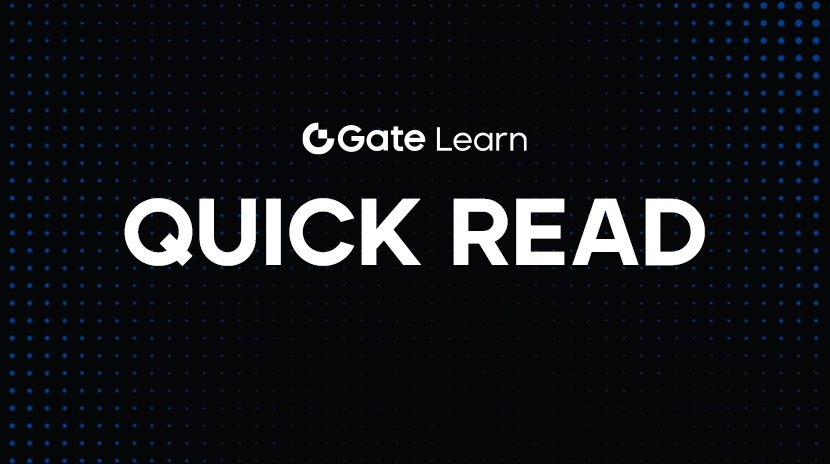Stripe so với Paypal
Lời tựa
Trong kỷ nguyên Web3, các công cụ thanh toán không còn chỉ là gửi và nhận tiền mà chúng hoạt động như một liên kết quan trọng giữa các dự án và người dùng. Đối với nền kinh tế người sáng tạo, DAO, thị trường NFT và thậm chí cả nền tảng đăng ký trên chuỗi, việc lựa chọn nền tảng thanh toán phù hợp là bước đầu tiên để mở rộng thị trường toàn cầu và tích hợp tài sản tiền điện tử. Trong số nhiều tùy chọn có sẵn, Stripe và PayPal vẫn là hai gã khổng lồ thanh toán nổi bật nhất.
Sự khác biệt về vị thế giữa Stripe và PayPal
Stripe là công nghệ, tận dụng thiết kế API linh hoạt, quy trình tích hợp thông minh và logic thanh toán mở để trở thành cốt lõi tài chính cho vô số dự án Web3. Từ việc hỗ trợ ví tiền điện tử phổ biến như MetaMask và Phantom đến tích hợp USDC trên Solana như một giải pháp thanh toán stablecoin chi phí thấp, Stripe có thể được coi là hệ thống thanh toán Web2 gần gũi nhất với các ứng dụng on-chain ngày nay.

(Nguồn hình ảnh:@stripe)
PayPal, å å?o, ph?c v? ng??i dùng ph? bi?n h?n. Là m?t ng??i tiên phong trong thanh toán truy?n th?ng, PayPal có h?n 400 tri?u ng??i dùng và ???c s? d?ng r?ng rãi trên toàn c?u. Trong nh?ng n?m g?n ??y, nó d?n d?n tích h?p ti?n t?o ti?n ?i?n t?, ra m?t stablecoin riêng c?a mình PYUSD, h? tr? giao d?ch BTC, ETH và các lo?i ti?n t? khác, và tích h?p nh?ng tính nang này vào n?n t?ng thanh toán xã h?i c?a mình, Venmo.

(Nguồn hình ảnh:@PayPal)
Các tính năng cốt lõi của Stripe và PayPal
Dưới đây là những điểm chính liên quan đến tính linh hoạt trong phát triển và khả năng tích hợp:
Ưu điểm của Stripe:
Cung cấp tài liệu API hoàn chỉnh và kiến trúc mở, làm cho nó trở thành lựa chọn lý tưởng cho các nhà phát triển Web3 tùy chỉnh tích hợp.
Hỗ trợ thanh toán ví tiền điện tử (MetaMask, Phantom), stablecoins (USDC), và thanh toán ngay lập tức.
Lý tưởng cho DAOs, NFT platforms, các công cụ tạo ra, và các sản phẩm dựa trên thuê bao, với sự hỗ trợ cho việc chia sẻ doanh thu và logic thanh toán đa bên.
Hợp tác với Coinbase để cho phép người dùng mua tài sản tiền điện tử nhanh chóng qua thẻ tín dụng, giảm ngưỡng cửa và nâng cao trải nghiệm chuyển đổi tiền mặt sang tiền điện tử.
Ưu điểm của PayPal:
Có một cơ sở người dùng lớn và hệ thống gửi tiền mặt thành thạo.
Phù hợp cho người dùng chính thống không quen với blockchain, mang đến sự giới thiệu dễ dàng về thanh toán tiền điện tử.
Integrates crypto features into Venmo, bringing on-chain assets closer to everyday use.
Vào cuối năm 2024, PayPal Holdings đã công bố việc tích hợp Solana (SOL) và Chainlink (LINK) vào PayPal và Venmo cho người dùng tại Mỹ, theo sau BTC, ETH, LTC và BCH. Sự mở rộng này nhấn mạnh cam kết của PayPal trong việc hỗ trợ các dự án cơ sở Layer 1 và Oracle, cho phép người dùng giữ và chuyển đổi một loạt rộng các loại tiền điện tử trong giao diện thanh toán quen thuộc.
Trải nghiệm người dùng và đối tượng mục tiêu
Stripe tập trung vào các nhà phát triển - đó là một nền tảng API, không phải một giao diện thanh toán. Các nhà phát triển có thể sử dụng nó để xây dựng dịch vụ đăng ký, quỹ DAO, hệ thống thanh toán tự động, và thậm chí tích hợp dữ liệu xác minh ví và quyền sở hữu NFT để tạo ra các tương tác on-chain phức tạp hơn. Sự linh hoạt này rất quan trọng đối với các dự án Web3, đặc biệt khi các luồng tài chính liên quan đến nhu cầu phức tạp như thưởng nhiệm vụ, chia sẻ lợi nhuận và hợp tác vượt biên, thay vì chỉ là giao dịch đơn lẻ.
Ngược lại, PayPal đóng vai trò là cầu nối giữa người dùng chính thống và tài sản blockchain. Người dùng không cần hiểu về các hoạt động trên chuỗi - họ có thể mua, chuyển khoản và thanh toán bằng tiền điện tử trực tiếp qua PayPal hoặc Venmo. Trải nghiệm ngưỡng thấp này đáng kể giúp thúc đẩy việc áp dụng Web3.
Cấu trúc phí, Hỗ trợ vượt biên và Tương thích với tiền tệ Fiat
Ưu điểm về Chi phí của Stripe:
Hỗ trợ USDC trên Solana, cung cấp phí siêu thấp và giao dịch nhanh chóng.
Lý tưởng cho các giao dịch siêu tốc, như mua NFT, đăng ký siêu nhỏ và thanh toán nhiệm vụ DAO.
Sức mạnh vượt biên của PayPal:
Hỗ trợ nạp tiền và rút tiền toàn cầu trong các loại tiền tệ chính, giúp cho người làm tự do và người bán quốc tế dễ dàng sử dụng.
Cung cấp một trải nghiệm ổn định cho các tình huống thanh toán nhất quán, mặc dù phí giao dịch khá cao.
Xu hướng tương lai
Trong xu hướng tổng thể, Stripe đóng vai trò là một động cơ phát triển cho các nhà xây dựng Web3, cho phép các nhà phát triển tự do xây dựng logic tài chính và tương tác trên chuỗi; PayPal, ngược lại, hoạt động như một cầu nối chuyển đổi từ Web2 sang Web3, cho phép nhiều người dùng dễ dàng tiếp cận tiền điện tử và chuyển giá trị trên chuỗi.
Trong tương lai, dự kiến Stripe sẽ tiếp tục mở rộng tích hợp với USDC, L2 và chuỗi công cộng, đẩy mạnh cơ sở hạ tầng thanh toán linh hoạt, chi phí thấp hơn; PayPal sẽ kiên trì tận dụng các tình huống xã hội và người dùng để tạo ra trải nghiệm Web3 thân thiện hơn, đưa tài sản tiền điện tử vào thanh toán hàng ngày.
Kết luận
Stripe phù hợp hơn cho các nhà phát triển và dự án muốn xây dựng logic tài chính có thể phân tách, mở rộng và có thể lập trình trong Web3. Trong khi đó, PayPal vẫn là một cầu nối kết nối người dùng chính thống với tài sản trên chuỗi, làm cho nó lý tưởng cho các ứng dụng cần nhanh chóng đưa người dùng mới vào hệ thống. Hai nền tảng này không phải lúc nào cũng loại trừ lẫn nhau - sự lựa chọn phụ thuộc vào đối tượng khán giả và độ phức tạp vận hành của dự án. Một số người có thể sử dụng Stripe cho logic backend trong khi tận dụng PayPal để có trải nghiệm onboard trơn tru hơn ở phía trước.
Bài viết liên quan

Hướng dẫn Xác minh KYC Pi Coin: Làm thế nào để vượt qua nhanh chóng

Dự đoán giá Solana năm 2025: SOL có thể đi lên cao đến đâu?

Hiểu về đồng tiền Baby Doge trong một bài viết

Những diễn biến mới nhất của Cardano (ADA)

Giá trị PI Crypto: Ra mắt Mạng chính vào ngày 20 tháng 2 năm 2025 & Dự đoán giá trong tương lai


